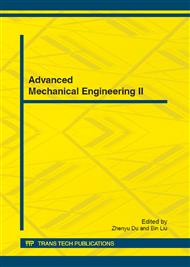p.370
p.375
p.380
p.385
p.390
p.397
p.401
p.406
p.415
The Research of Active Cancellation Stealth System Design
Abstract:
An active cancellation stealth system was designed based on the phased array techni- que, digital radio frequency memory (DRFM) and field programmable gate array (FPGA). Using the off-line calculation method, which establish goals of omnidirectional radar cross- section (RCS) database, clutter and noise database in advance. Signal processing and control module analyzes the measured radar signal parameter , then find the corresponding target echo data in the RCS database, and real-time adjustment of coherent echo amplitude and phase. Make target scattering field and artificial introduced into radiation field coherent cancellation in radar direction, so that the radar receiver is always in nulls synthesis pattern. Through the combination of software and hardware of the method in engineering realization of active cancellation stealth.
Info:
Periodical:
Pages:
390-396
Citation:
Online since:
July 2012
Authors:
Price:
Сopyright:
© 2012 Trans Tech Publications Ltd. All Rights Reserved
Share:
Citation:


